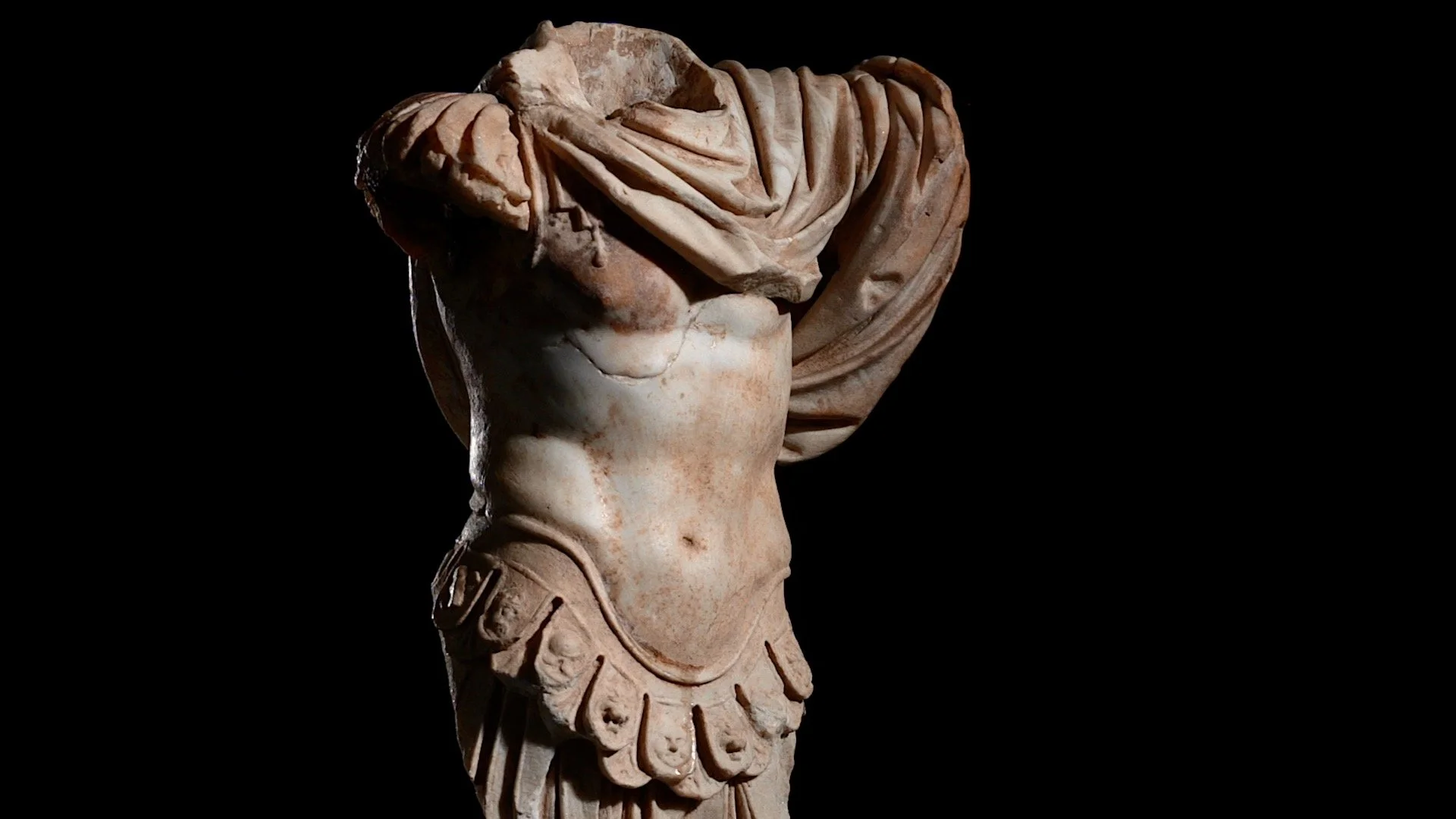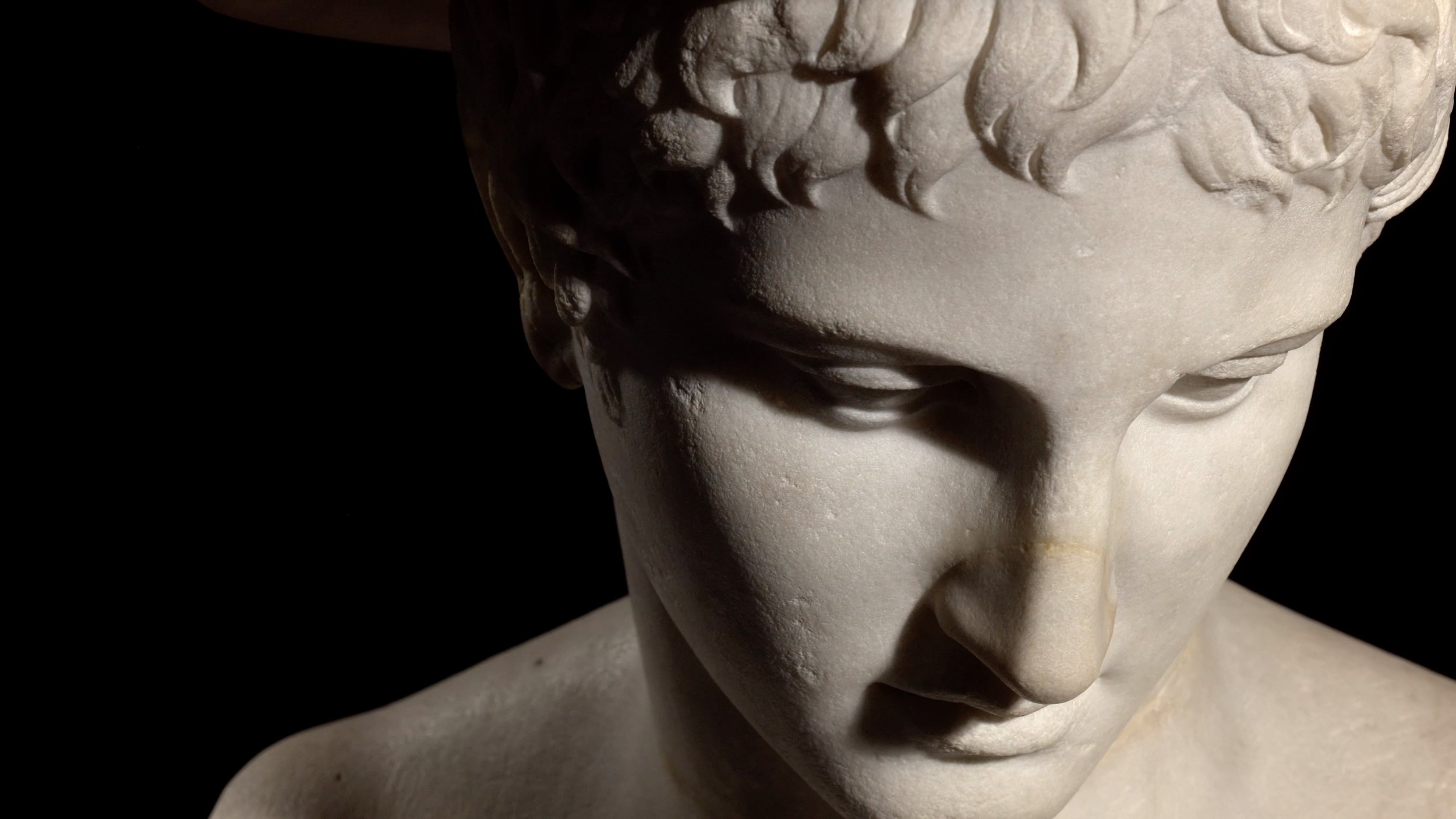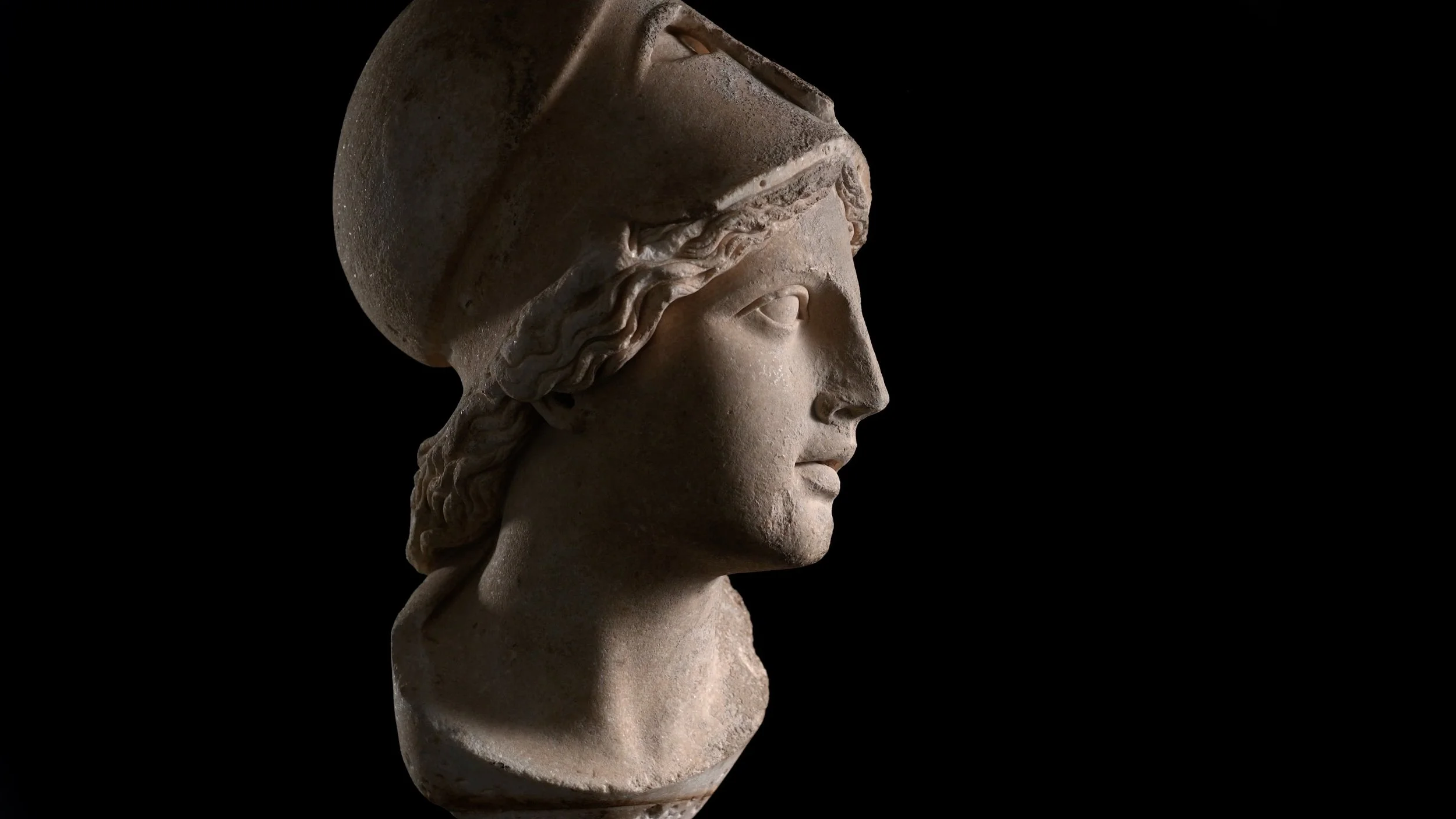Antiquities
A Roman Marble Cuirassed Torso
Circa 2nd-3rd century A.D. 16 1⁄8 in. (41 cm.) high.
Dressed in full military parade costume, known as a cuirass, this torso belongs to a class of Roman portrait statues erected to honour military heroes, triumphant generals and male members of the imperial family. These cuirassed statues were often richly decorated with emblematic compositions, so as to also serve as imperial victory propaganda, wherever they were disseminated.
This example wears a classical-style cuirass with two rows of lappets, decorated with Gorgoneia, lion's heads and palmettes, over a row of long leather straps. As was customary in the design of Roman armour, the surface of the cuirass imitates the musculature of the human torso. The figure wears a paludamentum over the cuirass, which is swept up over his shoulder. Of note is the absence of decoration on the cuirass, which we see also in a torso at the Getty Villa, Los Angeles, acc. no. 71.AA.436. The lack of ornamentation and size of the present example indicates that the statue did not represent an emperor or a member of the imperial family, but perhaps a general, or more likely a god, such as Mars.
Estimate £50,000 - £70,000. Price realised £226,800.
Sold by Christie’s in July 2022, London.
An Egyptian Limestone Group Statue for Mehernefer and His Son
Old kingdom, mid-late 5th Dynasty, circa 2400-2300 B.C.
One of the earliest works of art from ancient Egypt to arrive in England, this magnificent Old Kingdom statue of Mehernefer and his son was first presented to King George III as a gift from the Ambassador in Constantinople, Sir James Porter, during his appointment which lasted from 1746 to 1761. King George III subsequently donated the statue to Thomas Worsley (1797-1885) at Hovingham Hall, where it remained ever since. This masterfully carved statue reflects the style of 5th Dynasty royal portraiture from Memphite workshops, which established the canons for subsequent generations of Egyptian art.
Price realised £6,014,500
Sold by Christie’s in July 2022, London.
A ROMAN MARBLE MERCURY
Circa 1st century B.C./A.D.
This impressive life-sized figure of Mercury depicts him standing with youthful vitality and grace, with his weight on his right leg, with the left leg bent at the knee. He is nude but for a chlamys draped around his chest and shoulders, fastened with a round fibula on his right shoulder, falling down the back and extending across his left forearm. That Mercury is depicted is confirmed by the remains of the caduceus along the folds of the drapery and on the upper arm and his money bag just resting on the top of the tree-trunk support on the right. His musculature is well defined and conveyed with sensitivity and a clear understanding of a young, nude body. The lack of pubic hair indicates his youthfulness. Two large struts join the long excess of drapery to his left thigh and lower leg.
Estimate £650,000 - £850,000. Price realised £630,000.
Sold by Christie’s in July 2023, London.
A ROMAN MARBLE HEAD OF HERMES
Circa 120-140 A.D.
THE LANSDOWNE HERMES
The god is here depicted with youthful and delicate features: the slightly parted small lips, the straight bridge of the nose joining the marked arches of the brows and the smooth forehead. The short wavy locks of hair are carved in beautiful detail and place this head within the longstanding Polykleitan tradition which was extremely popular during the 5th Century B.C. and widely copied by Roman artists. A. Linfert suggested that this head is a variation of Polykleitos’ Hermes, like another full statue of the god previously at Lansdowne House and now at the Metropolitan Museum of Art (acc. No. 56.234.15).
Estimate £3,000,000 -£5,000,000.
Offered for sale by Christie’s in July 2022, London.
A Roman Marble Athena Head of Vescovali Type
Late Flavian-Early Trajanic, circa 2nd century A.D.
The Athena Vescovali is named after the statue now in the Hermitage, originally in the Falconiere Collection in Rome, and sold in the 19th century by the Roman art dealer Ignazio Vescovali to Nicola Demidoff. She is the most reproduced Athena type with over 30 known copies, however the head type was often muddled with that of the Rospigliosi, with various Vescovali heads being erroneously attached to Rospigliosi body types. In his 1971 article on the Mattei Athena in the Louvre, G. B. Waywell lists the above head as a Rospigliosi-type, alongside three others including no. 1383 in the Chiaramonti Gallery in the Vatican. However in the more recent reassessment of the different Athena types Ina Altripp lists this head as Vescovali type.
Her eyes are beautifully rendered and the dramatic turn of her neck is elegantly achieved with the typical slight asymmetry of her face. Her hair is loosely pulled back in narrow strands held at her neck. The famous Corinthian helmet atop her head is remarkable in its craftsmanship – showing the skill of the sculptor to achieve the open space between the eyes, nose guard and her head beneath. In this piece one can clearly see the majestic power of the goddess of war on one hand and in her gaze, the tranquillity and serenity of the pacifist.
Estimate £200,000 - £300,000. Price realised £819,000.
Sold by Christie’s in July 2022, London.




